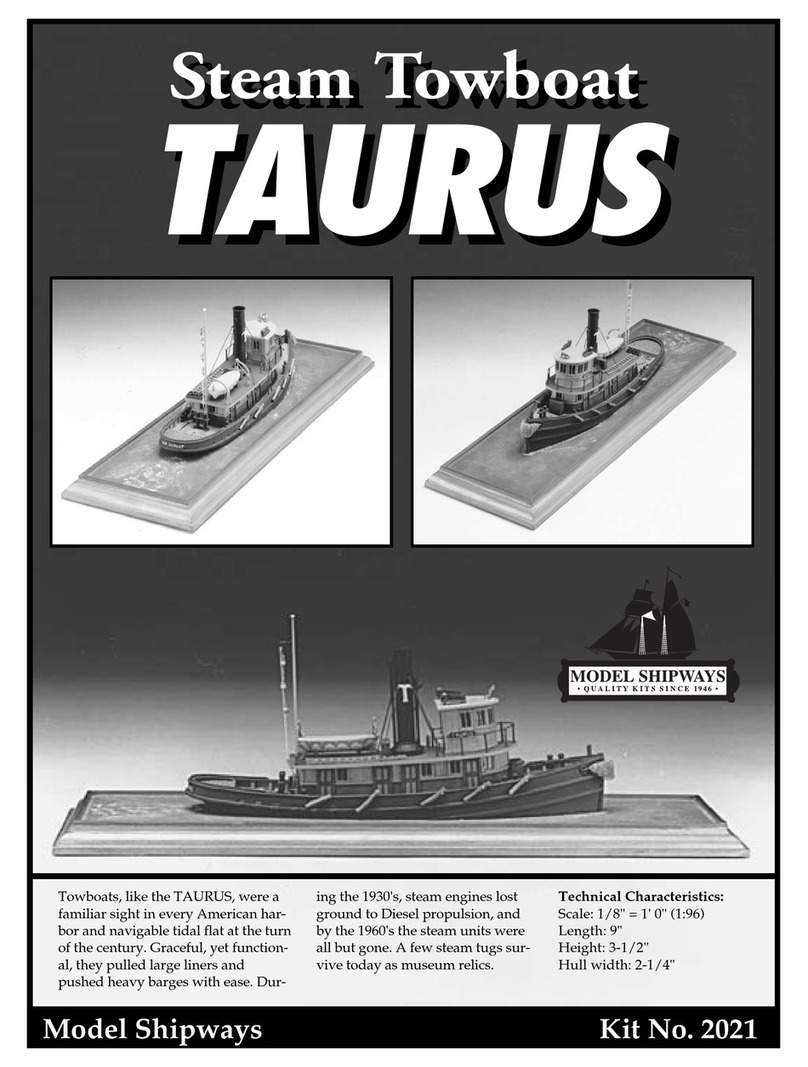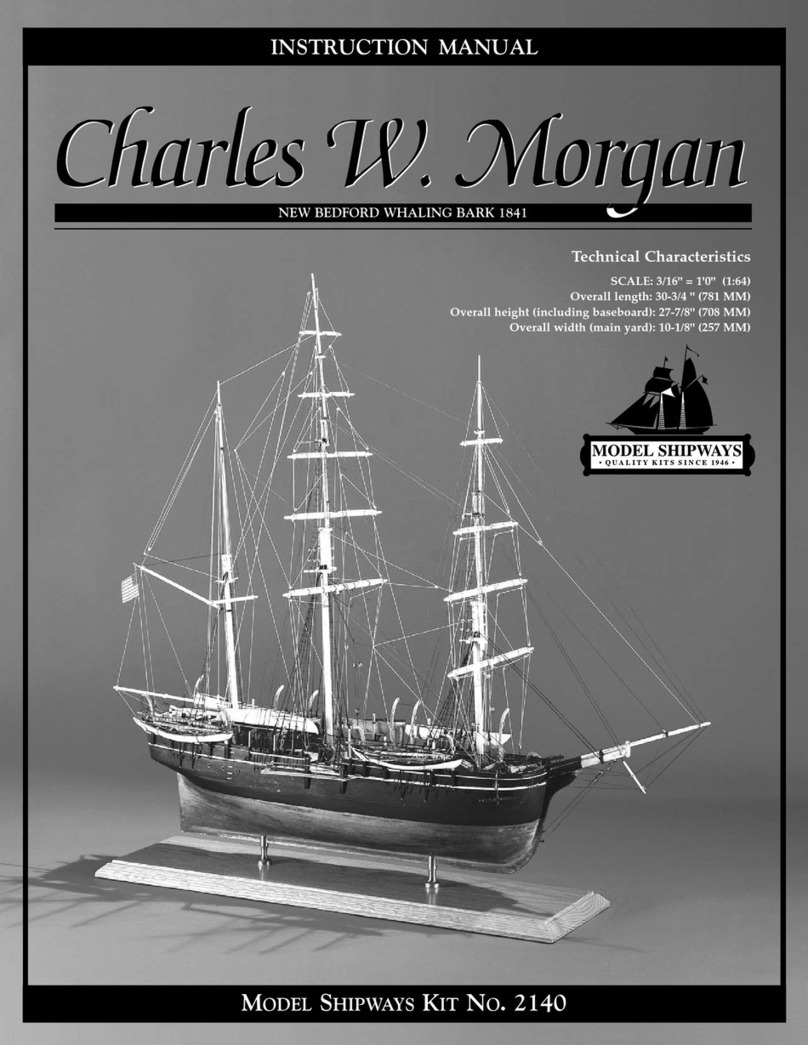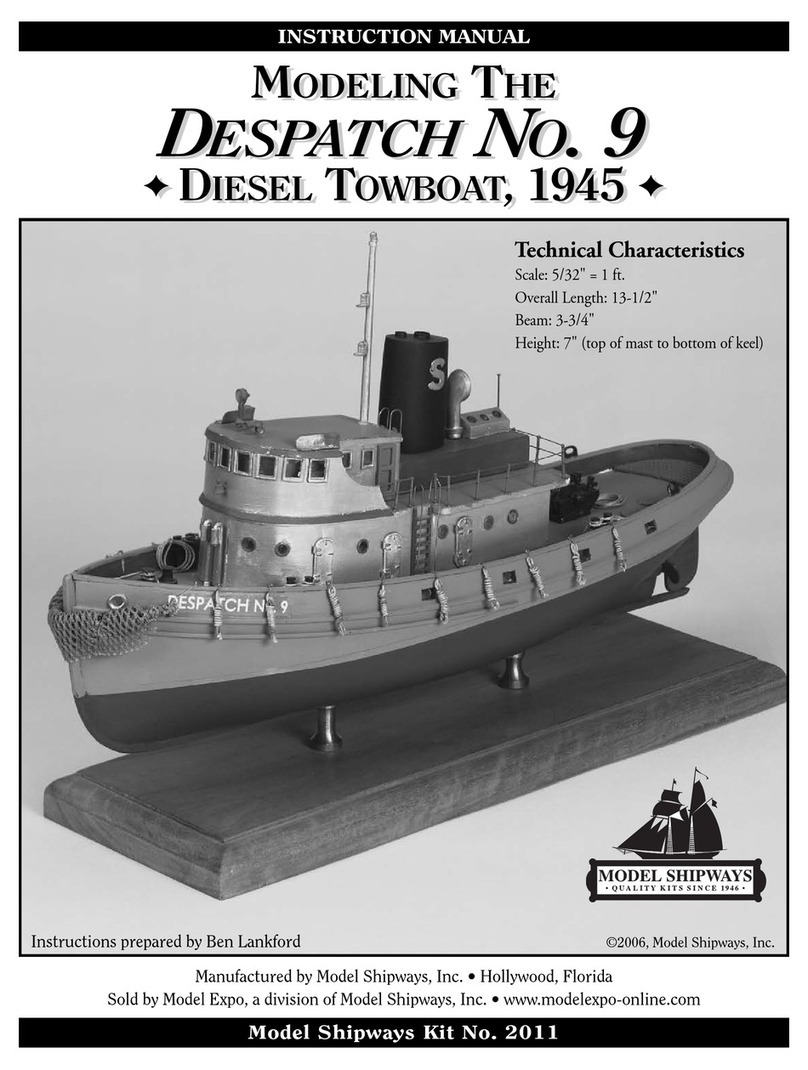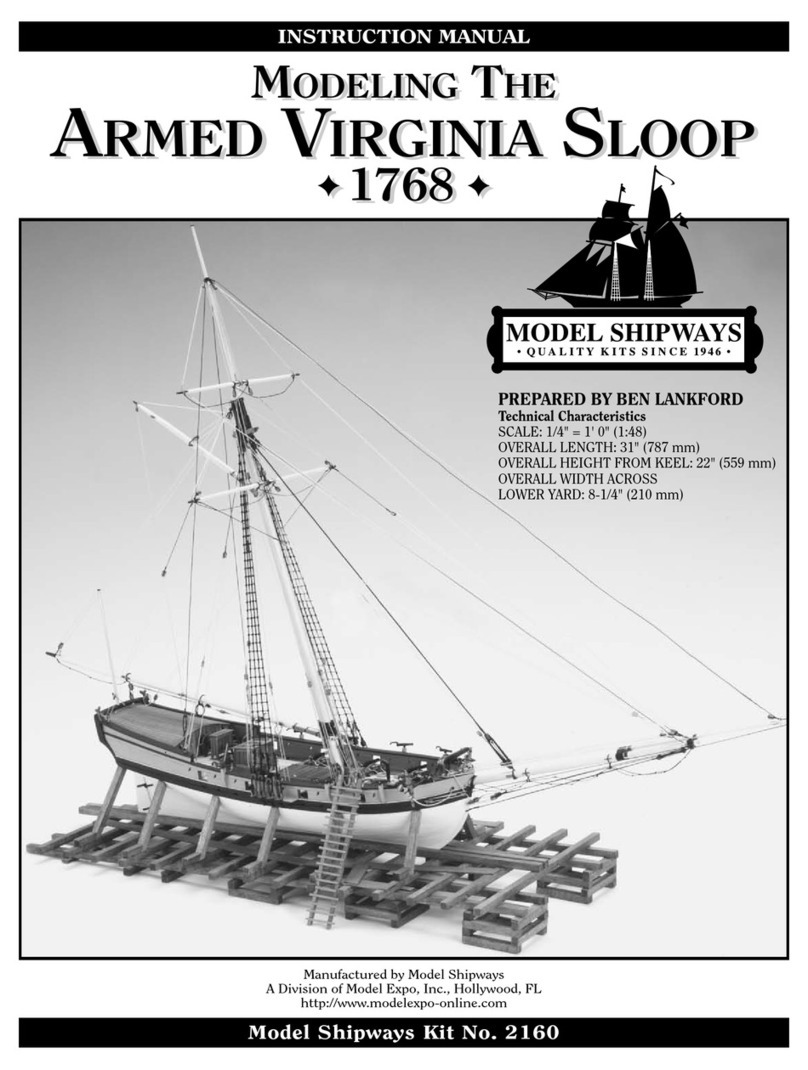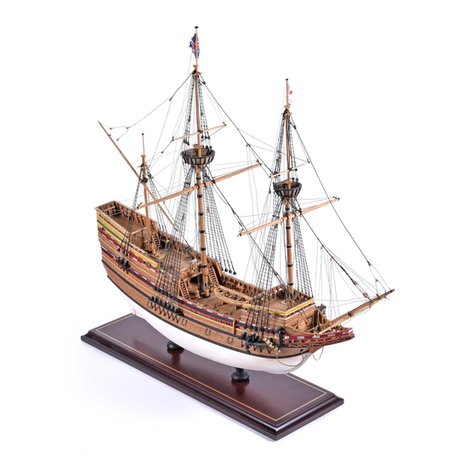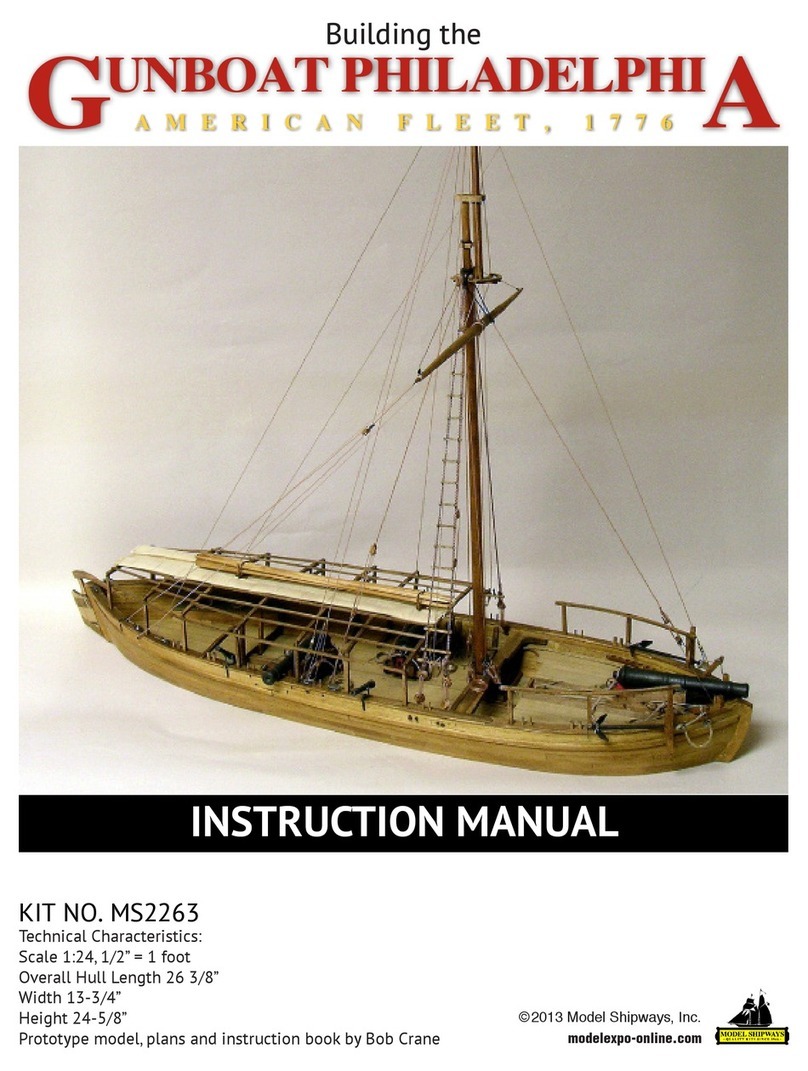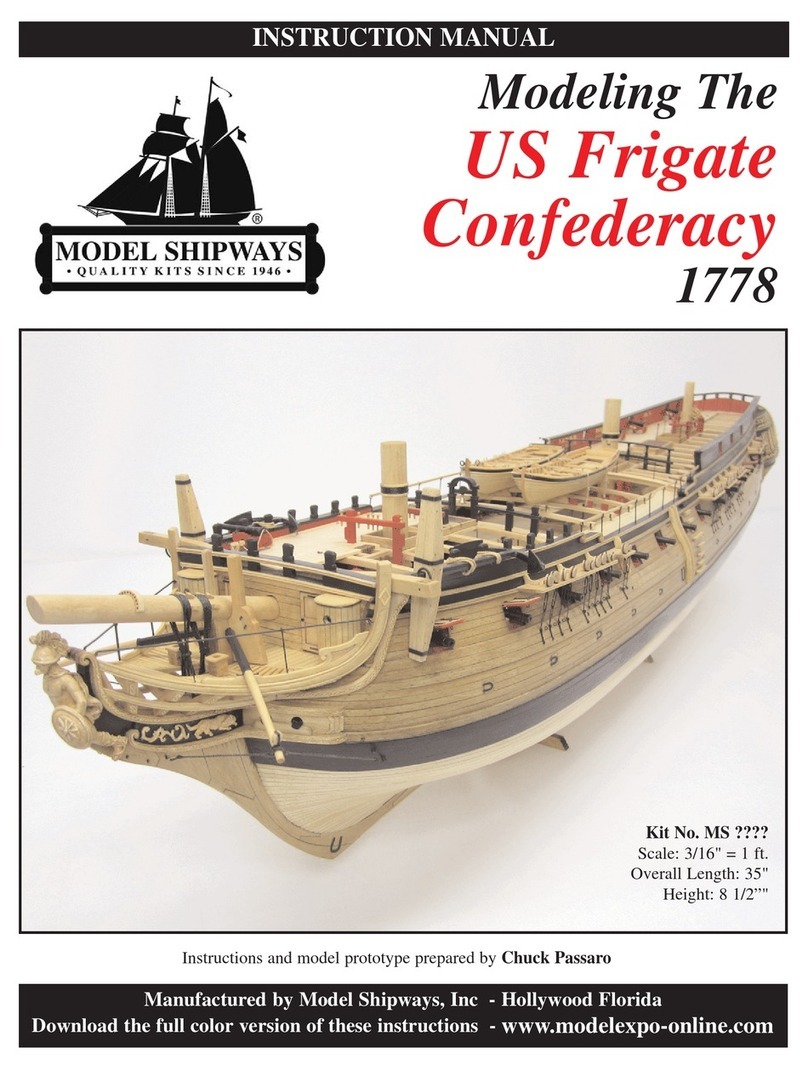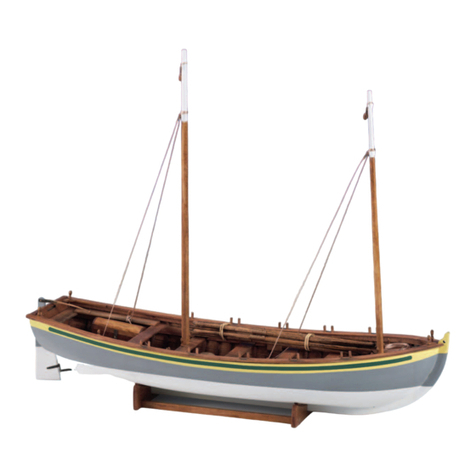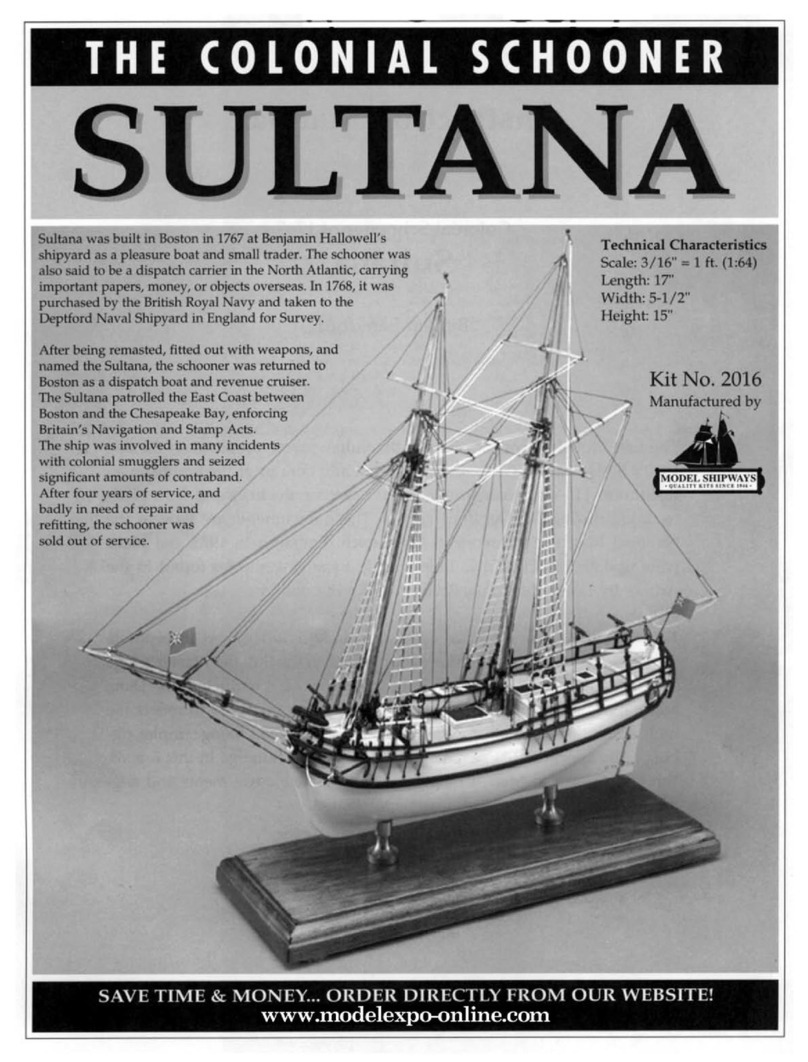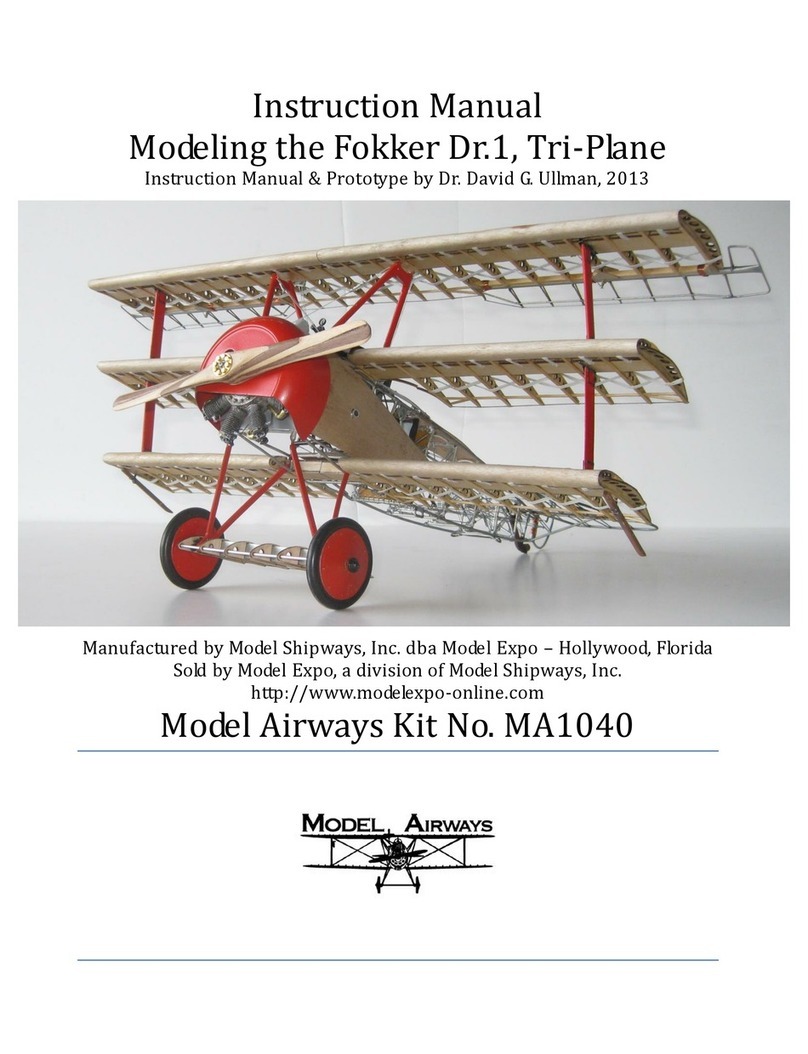
6
You may need to make adjustments or
allow for small differences in how your
model is shaping up; perhaps your mast
has too much rake (the angle at which it
sits). When lines go to belaying points
they should not drape over parts or con-
flict with other lines. If necessary, move a
belaying point or a fairlead. In other
words, put yourself on the ship and use
your judgement.
3. Understanding Hull Lines
Beginners may not be familiar with hull
lines. Buttock lines are vertical longitu-
dinal planes cut through the hull. Wa-
terlines are horizontal planes, and sec-
tions are transverse vertical planes. All
of these lines define the hull shape and
are used by the draftsman to fair the
hull form (create regular even curves).
A complete set of hull lines is shown on
the George Campbell plans but they are
not really needed for this particular
model. With the plank-on-bulkhead
construction, the laser-cut bulkheads
and center keel define the hull form.
These are based on the Rattlesnake hull
lines to outside of the planking, but are
made smaller to allow for the thickness
created by adding the planks.
4. Using Basswood Lumber
Standard cut basswood is available in
sheets and strips. Normally, thickness is
available in 1/32", 1/16", 3/32", 1/8",
5/32", 3/16", 1/4", and 1/2". Widths of
strips are available in the same incre-
ments. Sheets may be 1", 2", 3", or 4". A
thickness of 3/64" is also a manufac-
tured thickness, but not found in many
catalogs. However, if needed, it will be
provided in Model Shipways kits.
Note: Your kit may contain European
limewood instead of the basswood most
of us are familiar with. For further infor-
mation see the notes in the parts list.
For the model scale 3/16" = 1' 0", 1/64"
is equal to 1" full ship size. 1/32" is
equal to 2", and so on. Generally, the
available sizes of basswood fit the full
ship size quite well and the strips or
sheets can be used directly. Occasional-
ly, you will find a size where the strip
must be thinner than the basswood size
supplied. In order to use a correct thick-
ness, you will need to sand down a cer-
tain thickness of basswood. This is easi-
ly done with a sanding block before
making a part.
If you are fortunate enough to own a
powered sanding thickness planer for
models, all the better. These can be pur-
chased commercially. You can also make
Before starting model construction, ex-
amine the kit and study the plans care-
fully. Familiarizing yourself with the kit
will serve two purposes. First, it will let
you determine that all parts have been
supplied as listed. And second, you'll be
surprised at just how quickly handling
the parts allows you to better under-
stand the kit requirements. Try to visu-
alize how every part will look on the
completed model. Also, determine
ahead of time what must be done first.
The instructions will help you in this re-
gard, but a thorough knowledge of the
plans at the outset is essential.
It is suggested that all small fittings and
hardware be sorted into labeled boxes or
compartments to avoid loss during the
building process.
1. The Plans
Four Plan Sheets are provided:
1963 Plans by George Campbell:
1. Hull Details and Lines Plan
2. Rigging Plan
1994 Plans by Ben Lankford:
3. Laser-Cut Wood Patterns
4. Plank-On-Bulkhead Hull Construction
In addition, a set of sketches appears
throughout this instruction manual to
further illustrate the various stages of
construction.
The Rattlesnake kit is manufactured to a
scale of 3/16" = 1' 0". Each plan sheet is
drawn to the exact scale that the model
is to be built, except where some details
have been enlarged for clarity. Most di-
mensions can be lifted directly off the
plans by using a set of draftsman di-
viders or by using a "tick" strip, which is
simply a piece of paper used to "pick
up" the dimensions (a roll of calculator
tape works very well). Lay your paper
strip over the plan and mark the lengths
of items carefully with a sharp pencil.
Then use the strip to transfer the marks
to the wood or item to be made to scale.
It is handy to have a triangular architect's
scale. Measuring and cutting parts using
the 3/16" scale gives you a better feel for
real ship sizes. It also gives you a con-
version for the full ship size dimensions
shown on the plans. At 3/16" scale, one
inch in full ship size equals 1/64". Keep
this in mind as you work. You will soon
know, for example, that if you see some-
thing 4 inches wide full scale, your
model part will be 1/16".
2. Making Allowances Along the Way
Try to be exact when following the plans,
but use common sense along the way.
your own using a drum sander in a drill
press. Clamp a block alongside the sander
so the wood can be inserted between the
block and sander. It's a makeshift deal,
but it works quite well.
It is a good idea to sort the wood con-
tained in the kit by thickness. When
building a certain part, select a suitable
size from the proper thickness pile. After
cutting what you need, return the remain-
ing piece to that thickness pile. This saves
a lot of time looking for a given thickness.
Don't worry about using a piece for one
item that was intended for another. It will
all come out in the wash. There is enough
extra wood in the kit so you should not
run out before you complete the model.
5. Cast-Metal Fittings
The kit is supplied with Britannia metal
castings. The Britannia metal is a great
improvement over the white metal that
was used in some older kits. Unlike
white metal and pewter, Britannia does
not contain lead, so there are no possible
corrosion problems. Many of these fit-
tings, however, will require final finish-
ing before they are suitable for installing
on the model.
Before painting the cast-metal fittings,
clean them up by removing all the mold-
joint flash. To do this, use a No. 11
hobby blade to cut the flash, then file or
sand with fine sandpaper. It is also sug-
gested that you clean the fittings thor-
oughly with warm soapy water before
applying primer. Make sure they are
rinsed thoroughly and allowed to dry
before painting.
6. Soldering & Working with Brass
The Rattlesnake is a ship from a period
that had very little iron fittings. Conse-
quently, you will not be required to do
much soldering, if any. Gudgeons, pin-
tles, and chain plates could be soldered
or simply glued. If you do solder, the se-
cret is to keep the parts to be soldered
clean, and keep the end of your soldering
iron clean and well tinned. File or sand
the parts, then keep your fingers off. Heat
the parts first, then touch the solder. File
off any excess solder.
HOW TO WORK WITH THE PLANS & PARTS
